Table of contents
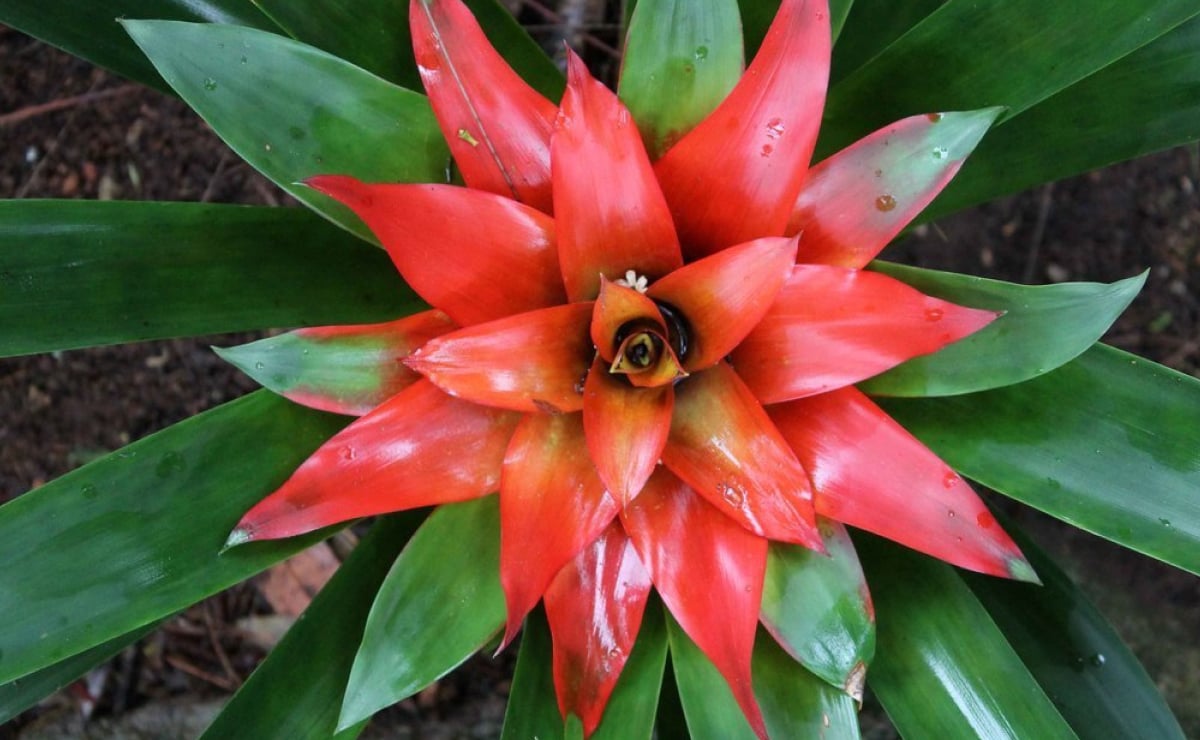
The bromeliad is a type of tropical vegetation with a great variety of species. It is known for the grouping of its rosette-shaped leaves and for its exotic, colorful look. A very popular plant for ornamenting gardens and flowerbeds, but it can also be grown in pots to decorate indoor environments and to compose vertical gardens.
To learn more about the bromeliad, here are tips on care, a list of species for sun or shade, and inspiring ideas for decorating with various types of this wonderful plant.
How to care for Bromeliads: 10 essential tips
Although there are different types of bromeliads, their care is quite similar:
- Watering: Water frequently, wetting the central part of the plant and spraying water on its leaves on the hottest days.
- Luminosity: The darker the leaves, the more light they need. In general, most species like brightness, some can be grown in full sun, and others prefer shady areas.
- Vessels: prefer to grow them in clay or ceramic pots. These containers ensure greater stability for the plant and keep the substrate always fresh.
- Substrate: bromeliads appreciate a light and less compacted substrate, so it is recommended to add materials such as pine bark and coconut fiber to the soil mixture.
- Fertilization: To stimulate the growth of leaves and flowers, fertilize the plant every 15 days, with an NPK 4-14-8, foliar fertilizer, or with a specific product for bromeliads.
- Temperature: because they are plants that appreciate heat and humidity, prefer to grow them in ventilated environments with temperatures between 15° and 25 °C.
- Pests and fungi: Because they are sensitive plants, insecticides and fungicides should be avoided. To combat mealybugs, aphids, and other pests, use a solution of smoke diluted in water. Against fungus, wash the leaves gently with water and coconut soap.
- Dengue: to avoid the proliferation of the dengue mosquito, add some coffee powder in its central rosette.
- Flowering: bromeliads bloom only once when they reach adulthood, after which they issue shoots on their sides for new plants.
- Pruning: does not require pruning for maintenance, aesthetics, or growth, just eliminate dry or damaged leaves.
With all this care, your bromeliads will always look gorgeous and make any space more beautiful with their leaves and colors.
Sun Bromeliads
Some species of bromeliads can be grown in full sun and will look great in your garden:
Imperial bromeliad
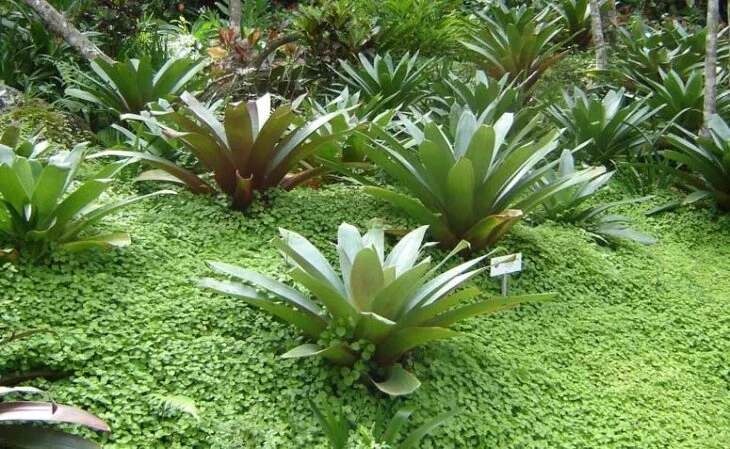
It is a plant with ornamental foliage with variations of purple, red and green tones. It is appreciated in landscaping for its sculptural shape and intense colors. It can be cultivated in isolated pots or in flowerbeds in the garden. It tolerates full sun as well as half-shade.
Pineapple-ornamental
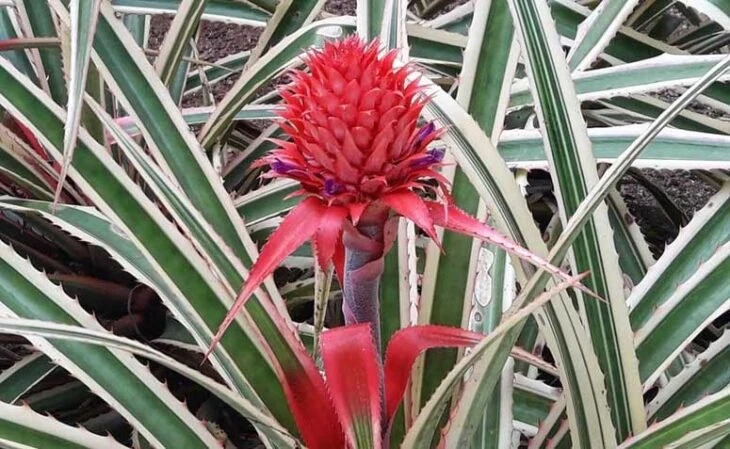
It is a very hardy type of bromeliad with a rustic appearance and ornamental foliage and fruit. It needs a lot of light and appreciates exposure to the sun. It has long, arched leaves with a reddish-green coloration. It adapts well to cultivation in pots and garden beds, however it will not provide large, edible fruit.
Caraguatá-do-mato
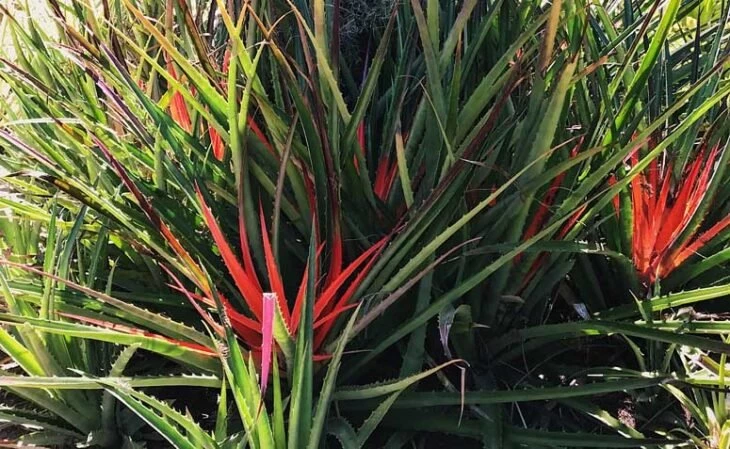
It has long, narrow, dark green leaves with spines spaced along its edges. In the center, its leaves can change color to a vibrant shade of orange or red. It produces small edible fruits in oval orange berries. It can be used alone, in groups, or as a living defensive fence.
Neoregelia
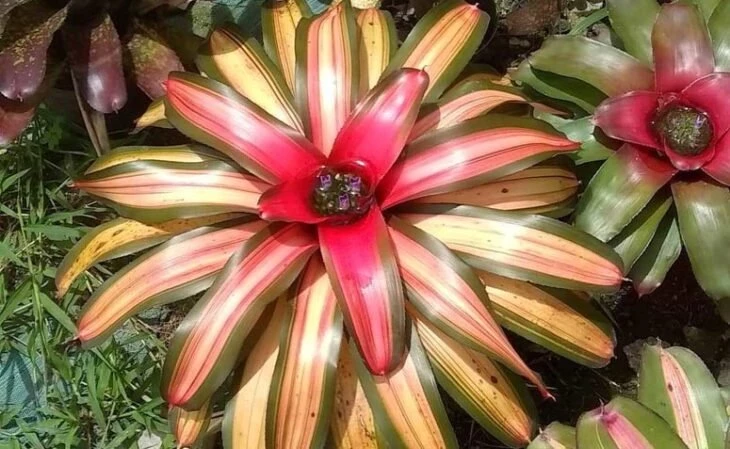
Most neoregellias are hardy and tolerate exposure to the morning sun. They have large, bright, colorful leaves in various patterns. They have great beauty and can be grown in gardens, pots, or tied to trunks and walls.
See_also: Pedra mineira: 30 ideas for cladding with this finishSafe Haven Bromeliad
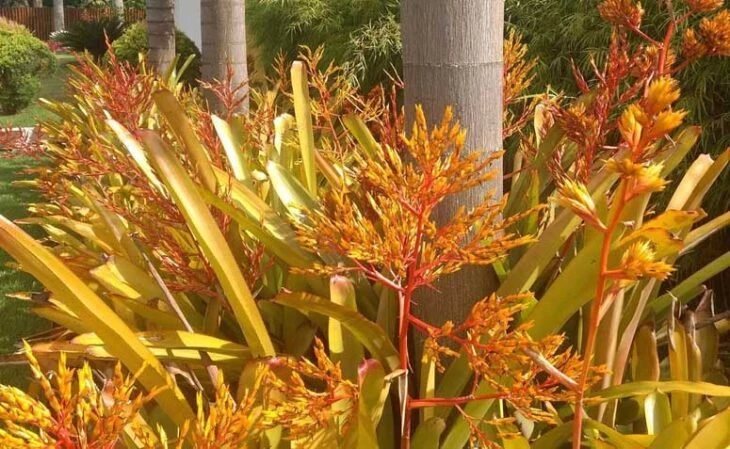
This bromeliad has thin leaves with a vibrant color that varies according to light conditions. When grown in full sun it has a yellow and orange hue, while under half shade it acquires lighter shades of green. Its small flowers are yellow and red.
See_also: Fazendinha Party: 140 images to make you fall in love with the themeThese are some types of bromeliads that are more resistant and will love to receive the sun's luminosity. Great to be arranged in outdoor spaces, gardens, and well-lit flowerbeds.
Shade Bromeliads
Other bromeliad species prefer to be grown in shaded locations, see which ones:
Aequimea
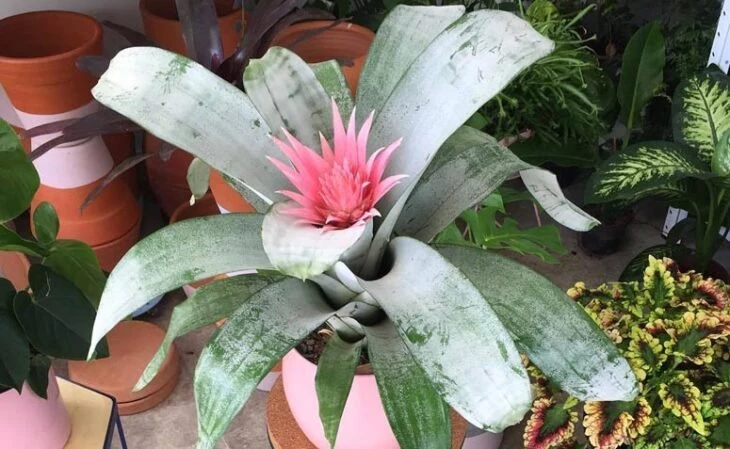
This bromeliad has rigid foliage with whitish spots. Its inflorescence is very durable and has a pink coloration. It is widely cultivated in pots to decorate indoor environments. It must be kept in a cool, humid place with indirect lighting.
Guzmania
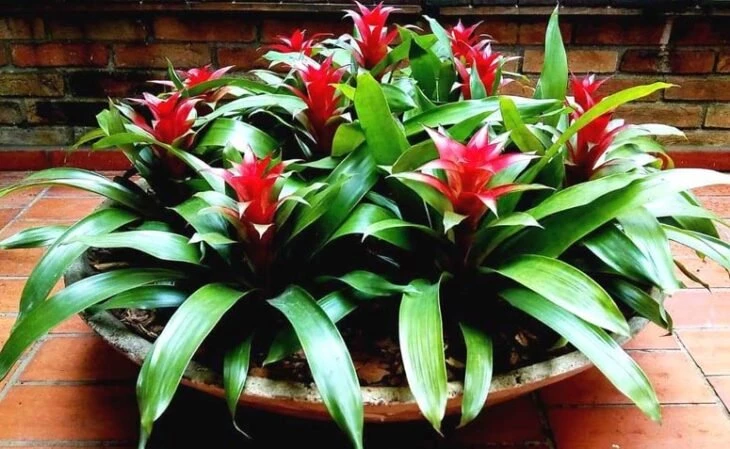
It has light green leaves with a soft texture. Its inflorescence stands out in height at its center and is found in colors such as red, yellow, white, and pink. It can be grown indoors in well-lit and shaded areas, as it does not tolerate direct sunlight.
Zebra Bromeliad

It is characterized by its green leaves with white stripes and has a red and yellow inflorescence. Its texture is different and stands out in decorative pots and garden beds.
Vriesia
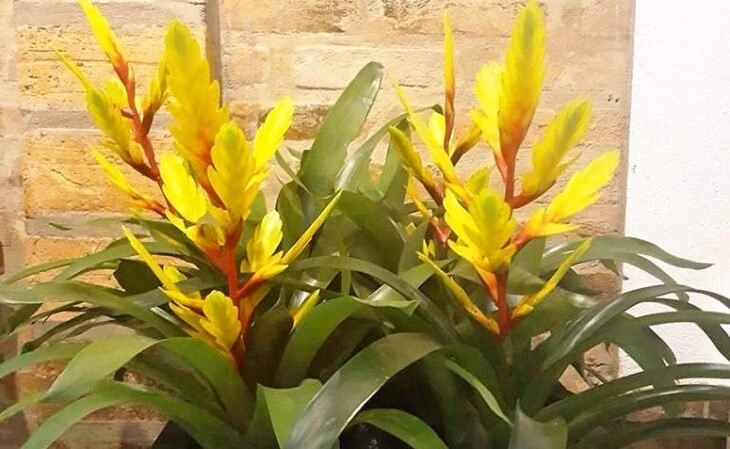
It has green or reddish leaves, without the presence of thorns. Its flowering has a delicate shape and can be spiky or flattened. Its most common colors are yellow, orange, and red. It is quite durable and therefore very appreciated for interior decoration.
These species are more sensitive and do not tolerate direct exposure to the sun. They are perfect to be grown in shaded places in the garden or indoors.
30 ideas for decorating with bromeliads to grow this tropical plant
For those of you who are excited to start growing the lovely bromeliads, here are several inspirations to decorate your garden or home:
1. the bromeliad can be grown in pots in the garden
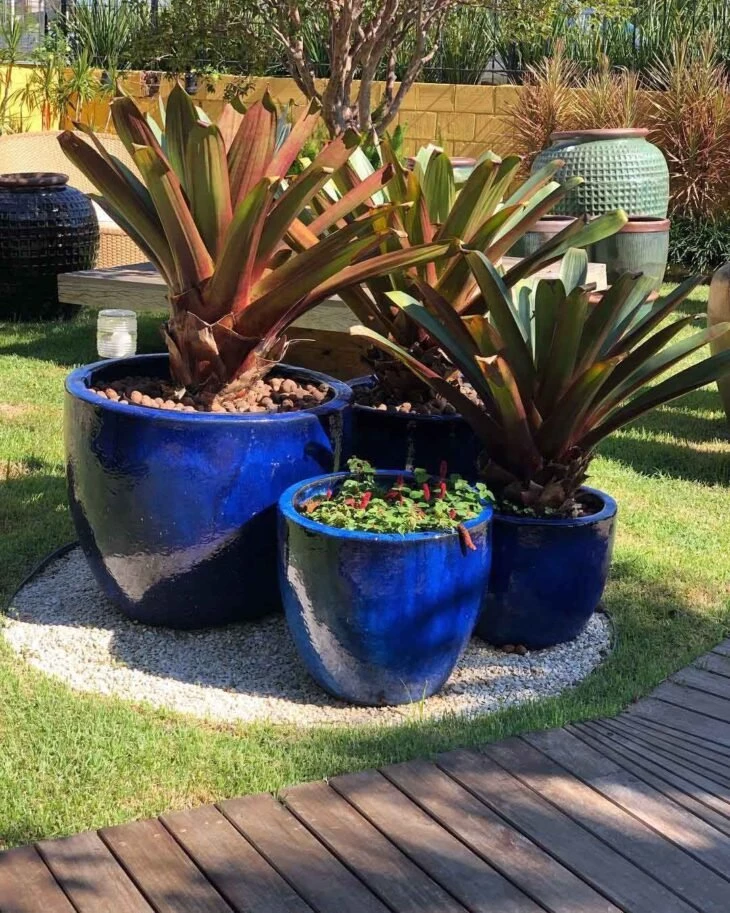
2. and used to decorate indoor environments
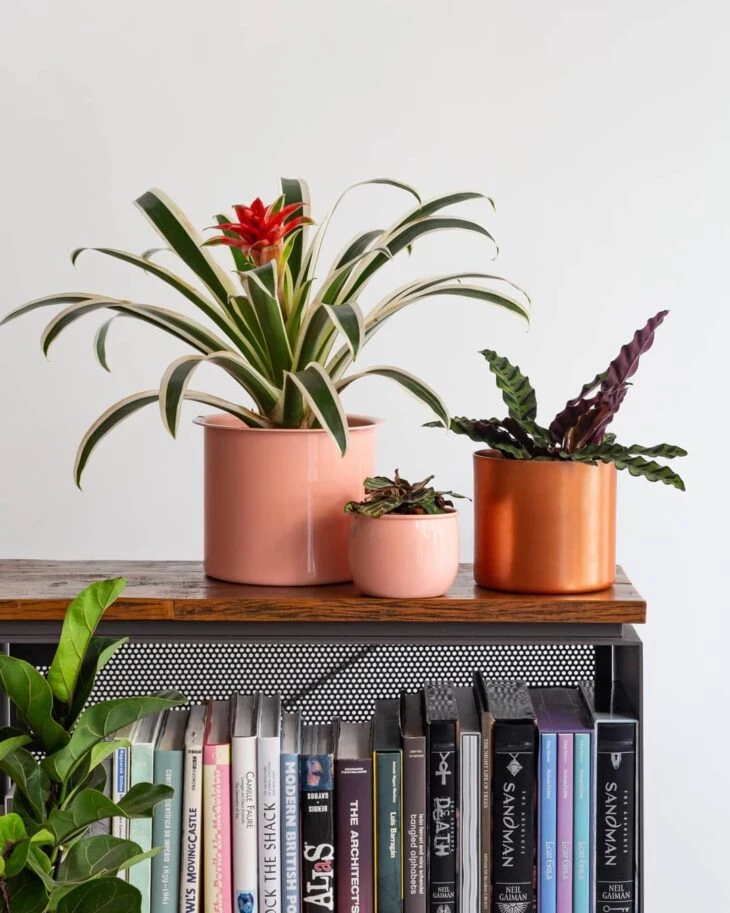
3. its blossom stands out in any space
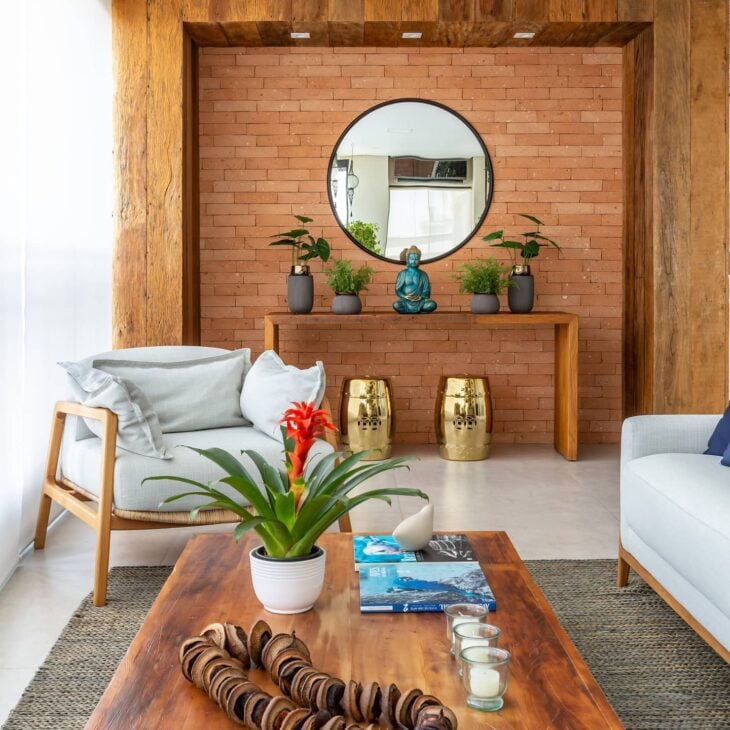
4. take advantage of the diversity of bromeliads to make a colorful garden
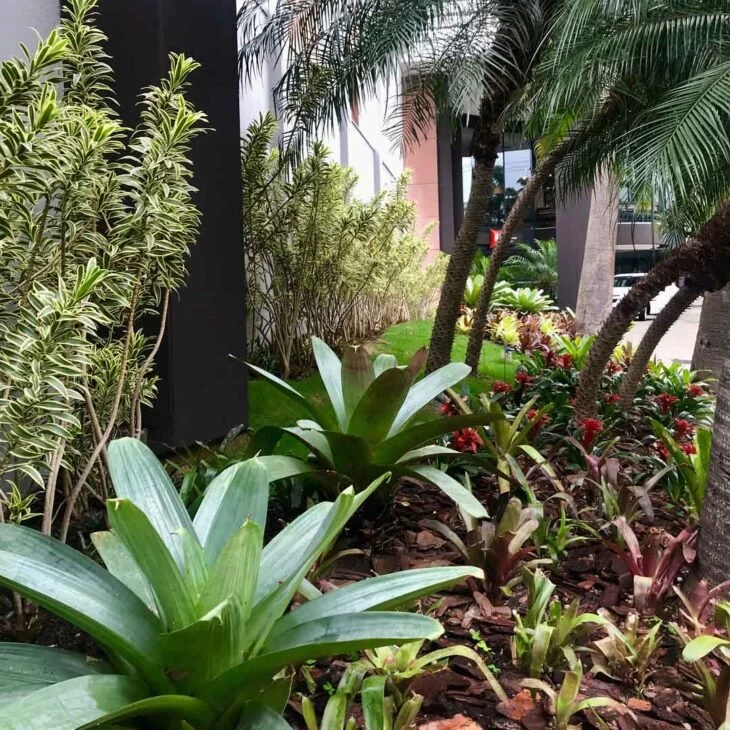
5. they can be grown even in small beds
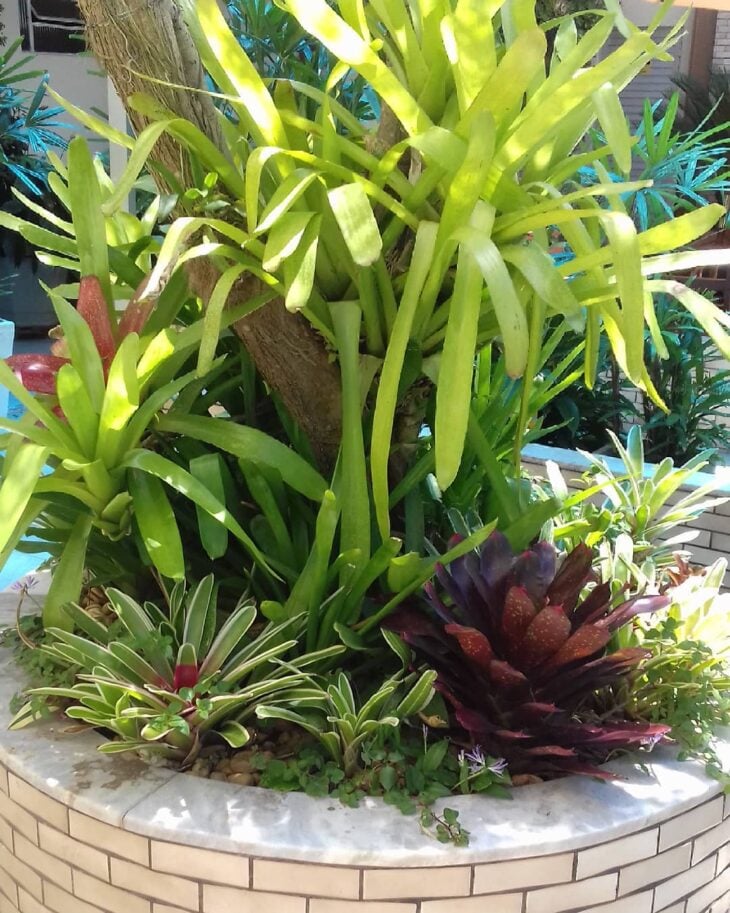
6. and they look great hung on trees
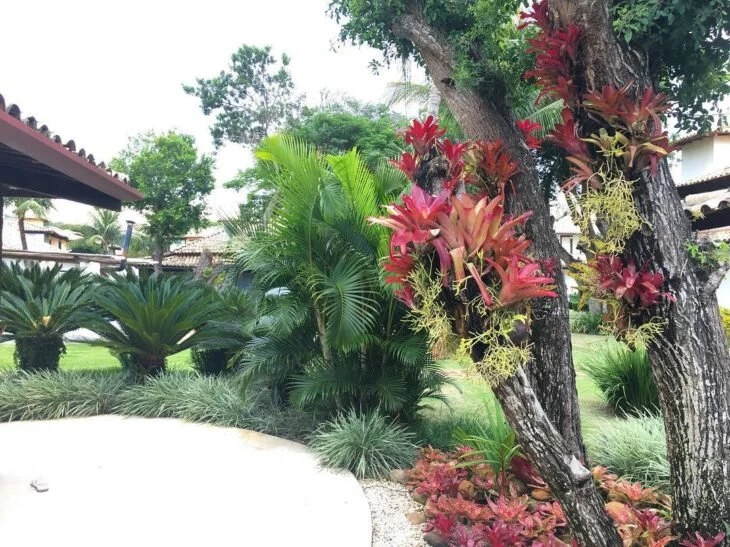
7. you can also use them to create a vertical garden on the balcony

8. decorate the walls with a tropical look
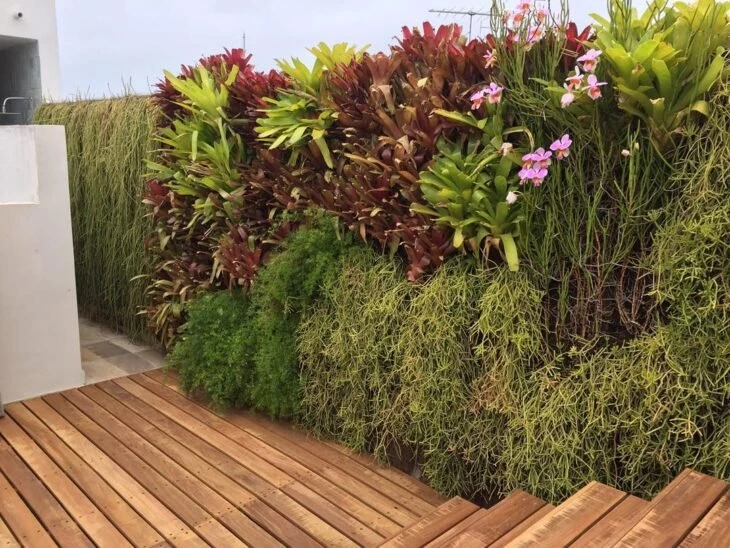
9. or simply hang on the balcony

10. the beauty of the bromeliad is enchanting
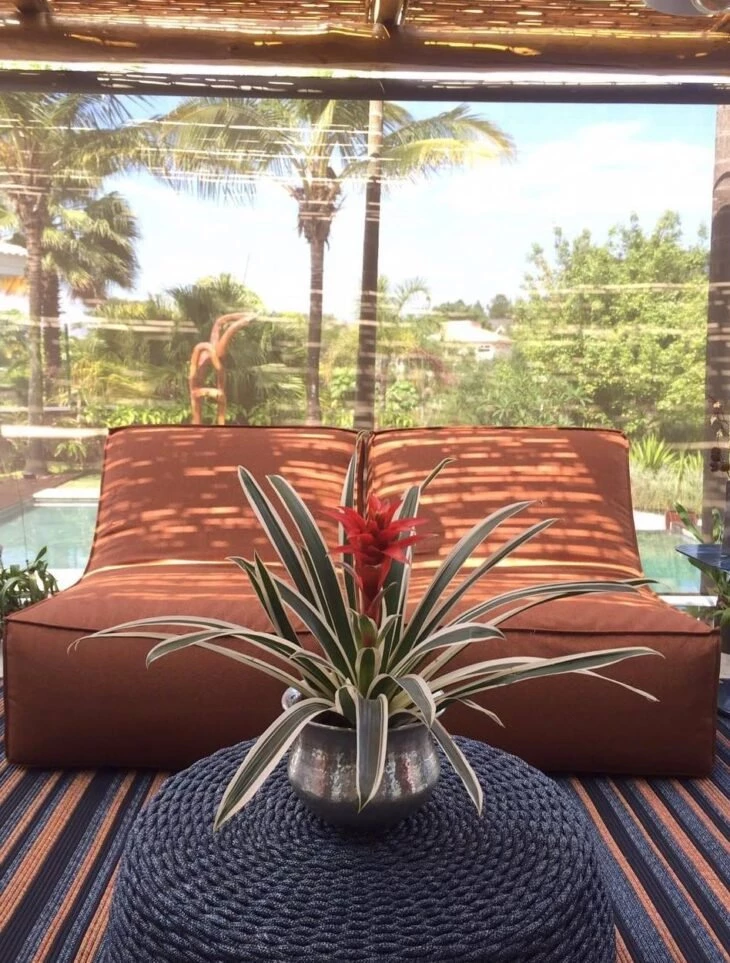
11. delicacy in a vase suspended with macramé
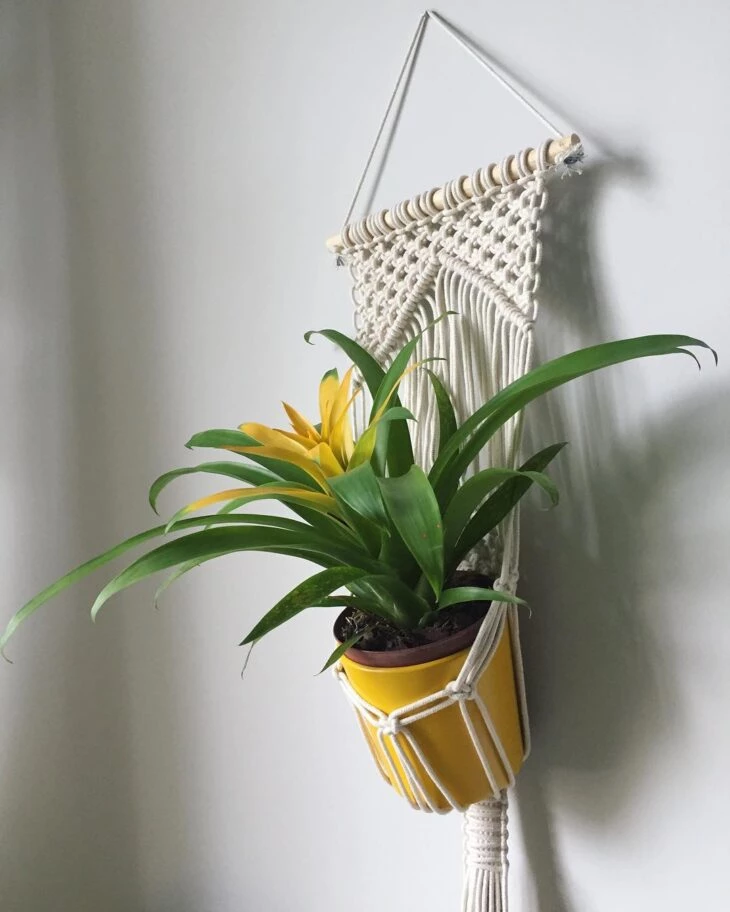
12. they are great plants for decoration

13. and make wonderful arrangements for the house
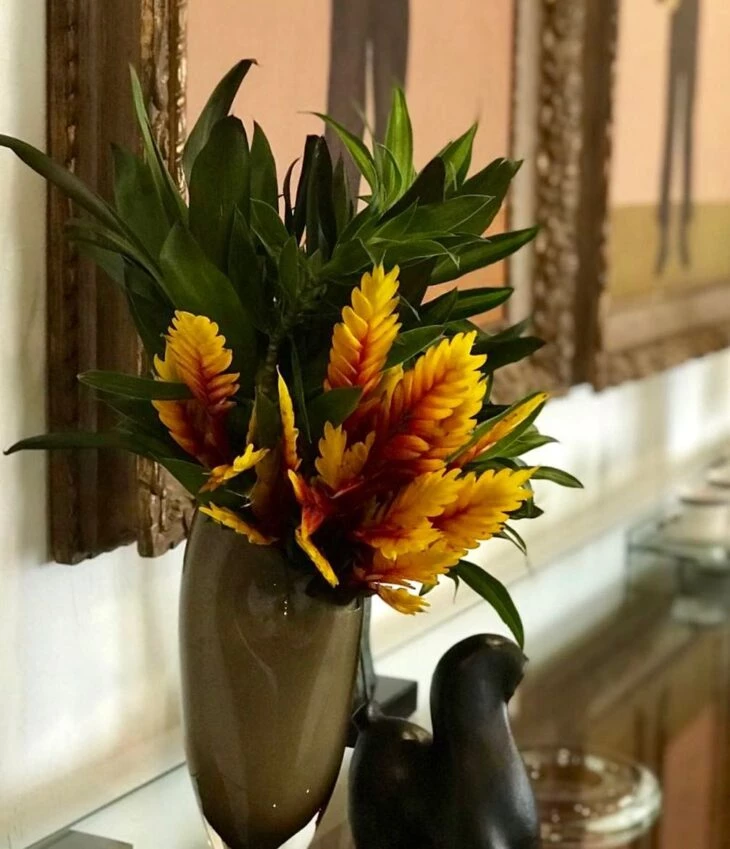
14. the bromeliad impresses with its intense colors
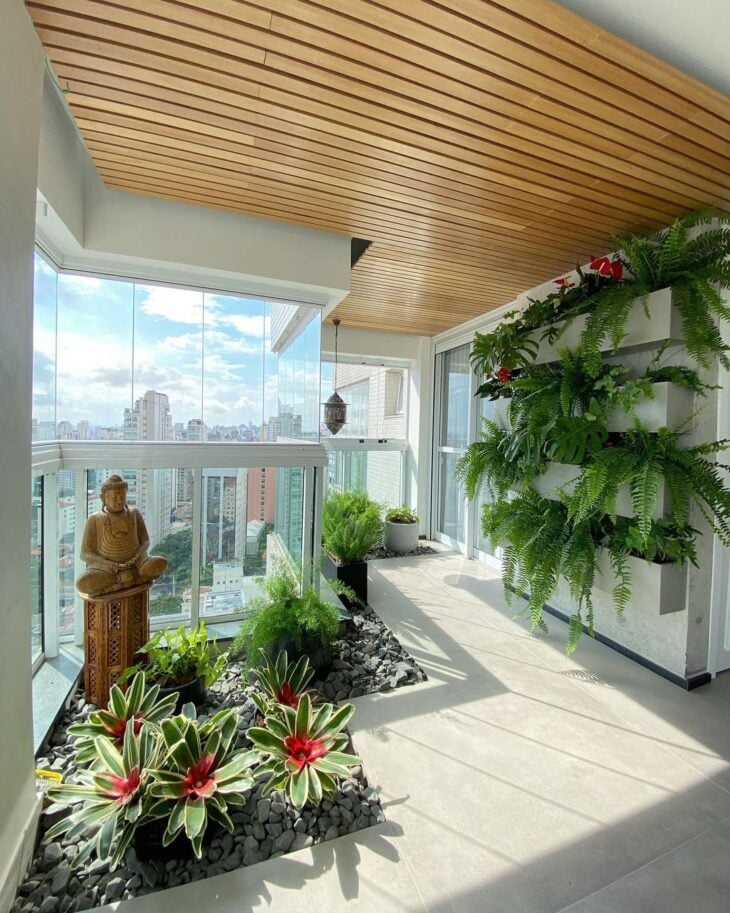
15. in vases, its presence is remarkable
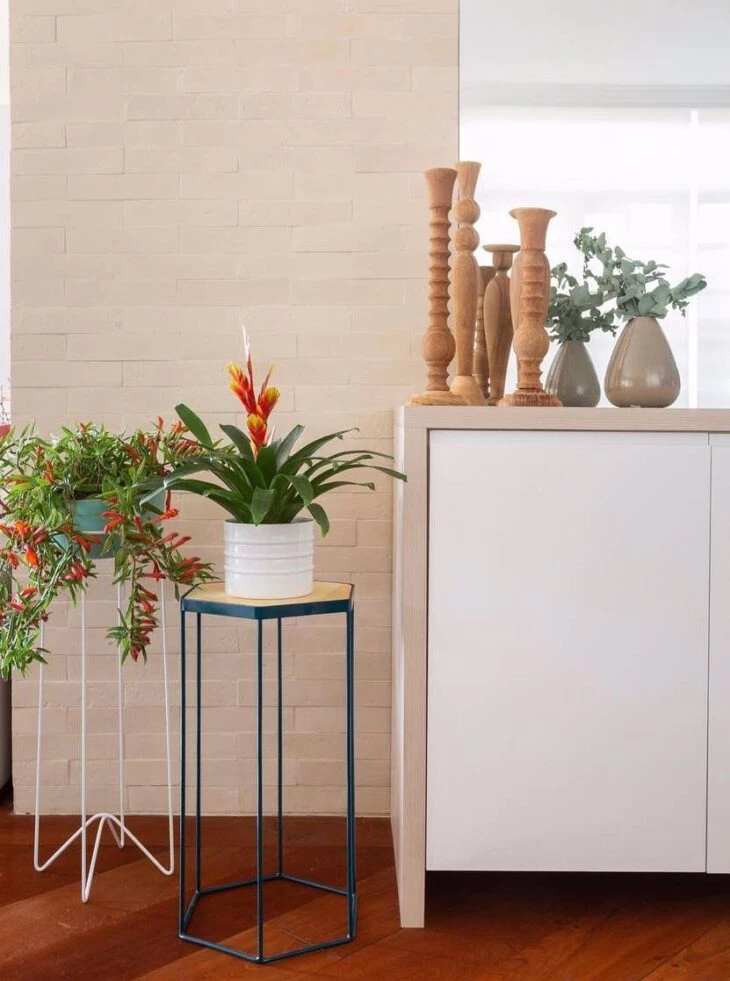
16. being a memorable centerpiece
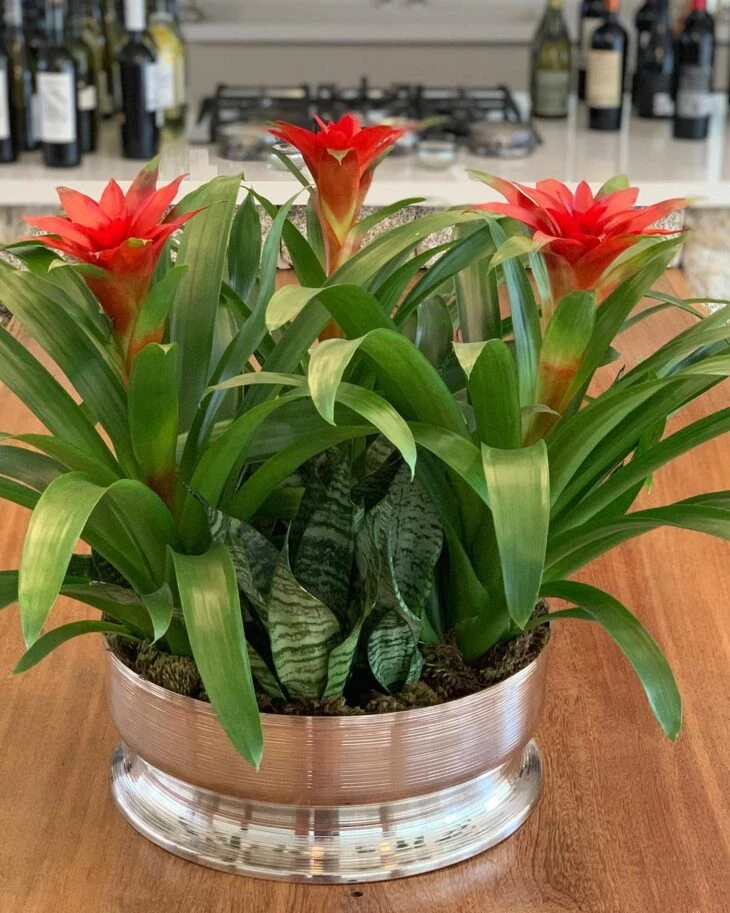
17. as there is a huge variety with many species
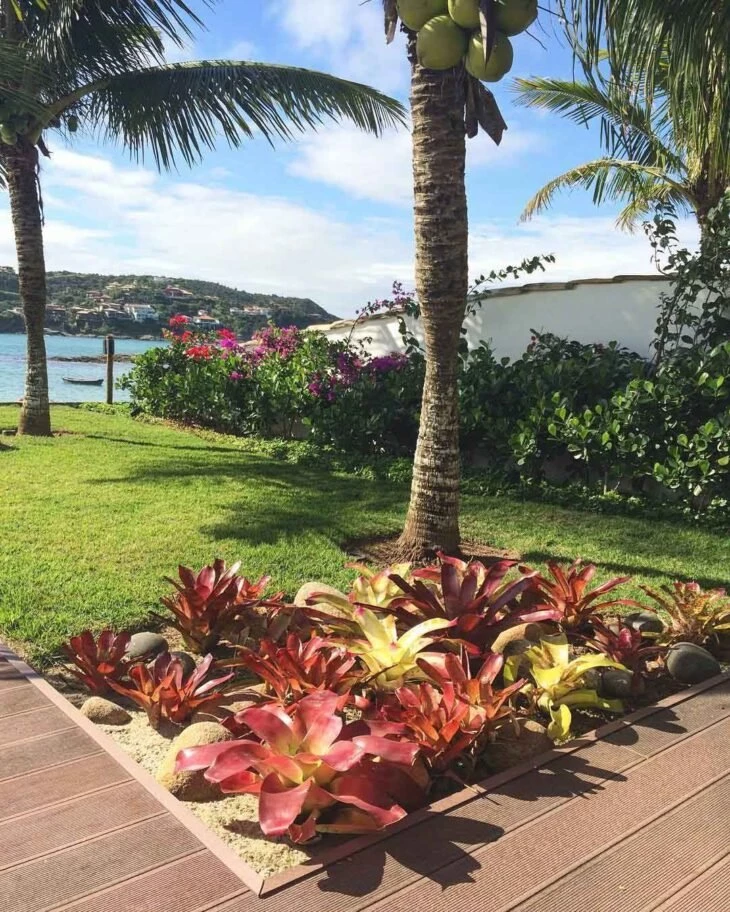
18. you can create amazing compositions with the mixture of bromeliads
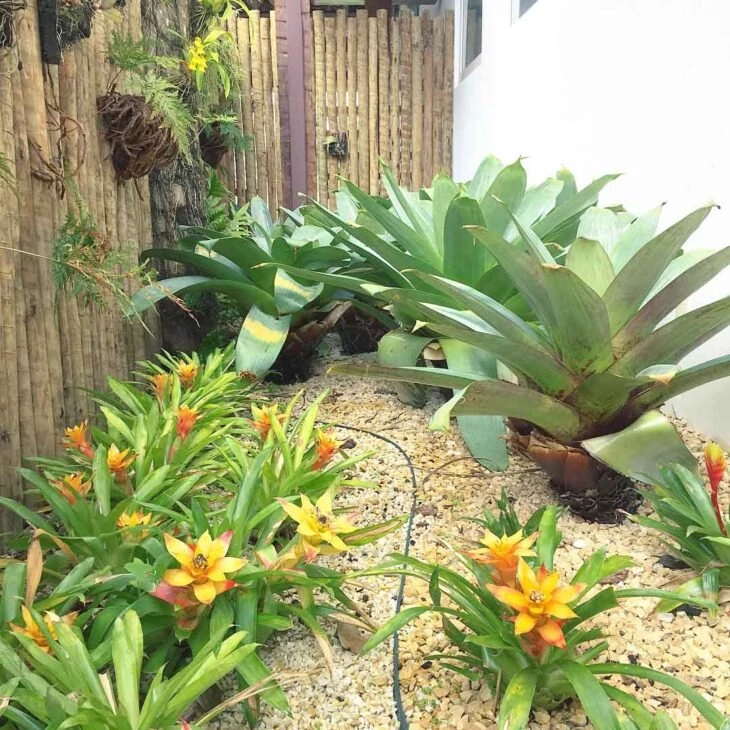
19. elegant to be arranged on a path
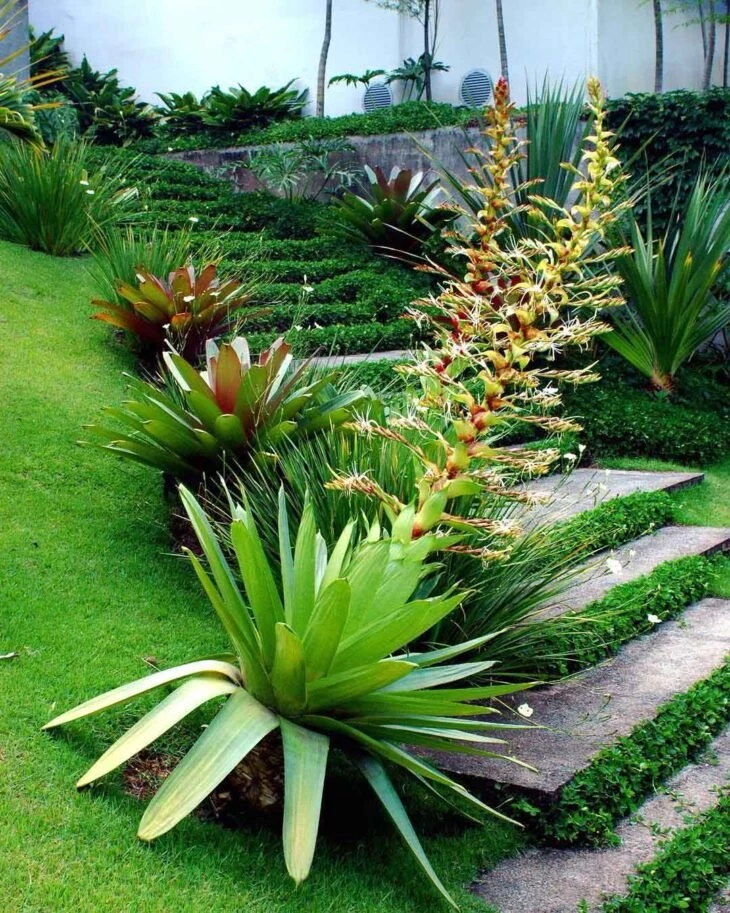
20. harmonize very well with other plants
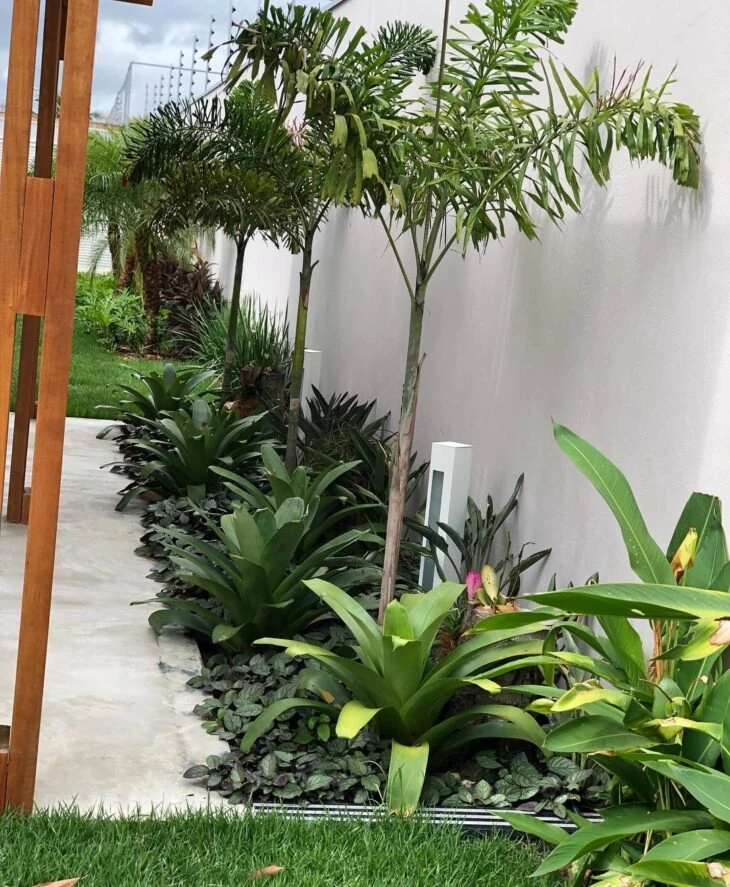
21. its leaves of different shades are a spectacle
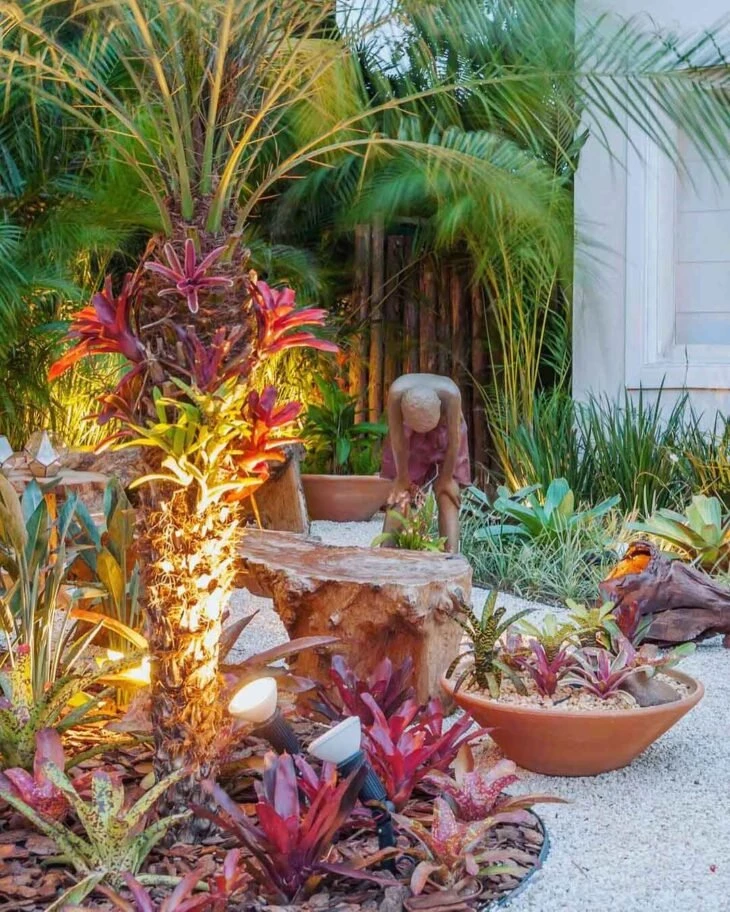
22. no matter the size of your garden
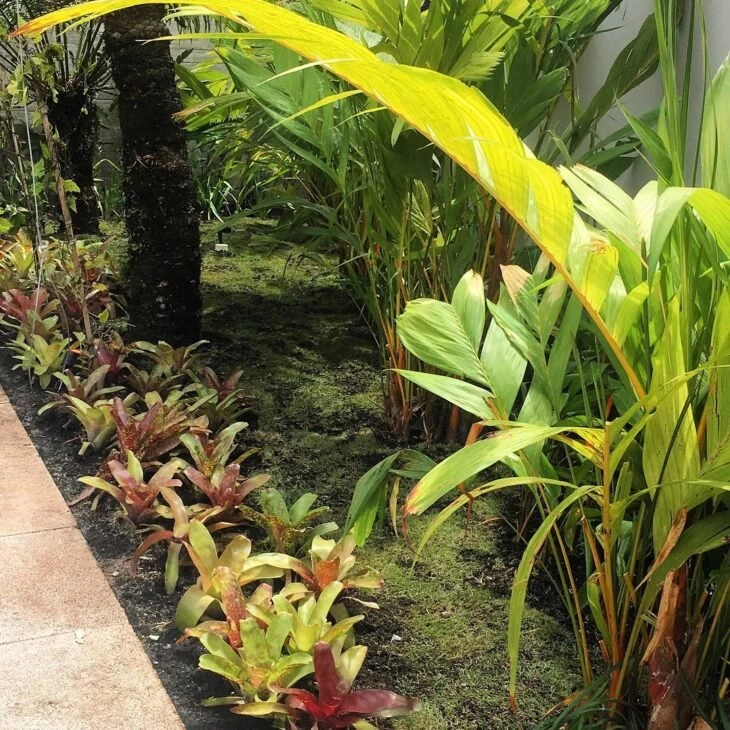
23. there are several types of bromeliads for you to explore
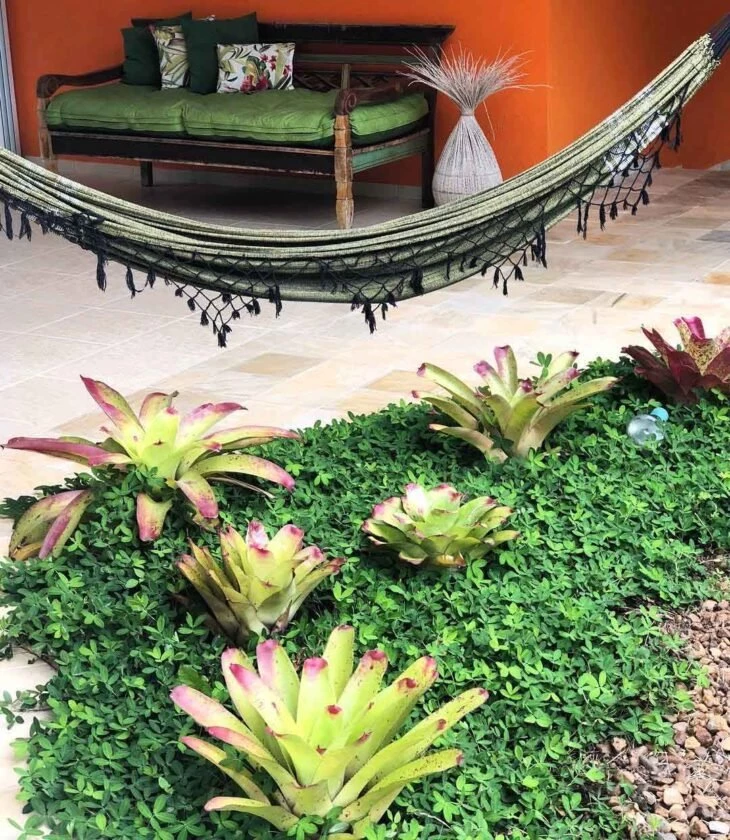
24. some look great in a flower box
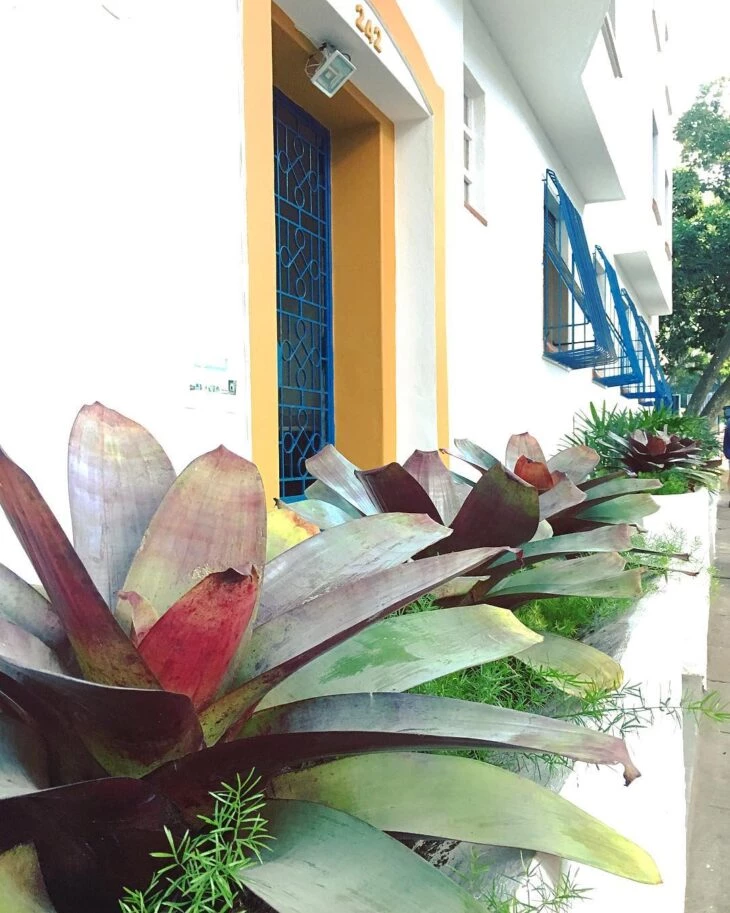
25. and others are perfect for decorating a small space with vases

26. match with contemporary and tropical style landscaping

27. they appreciate humid places like the bathroom
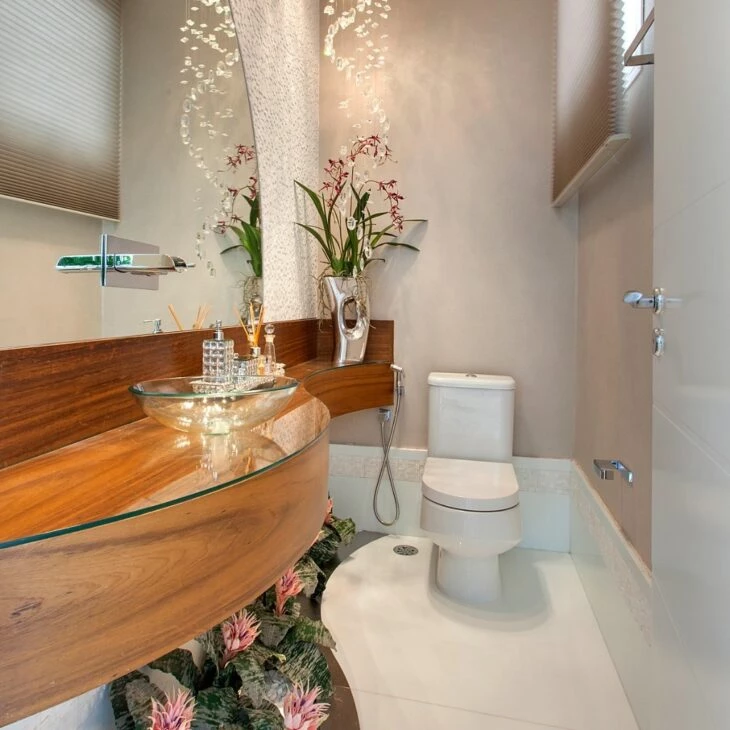
28 - They also look great on pool borders
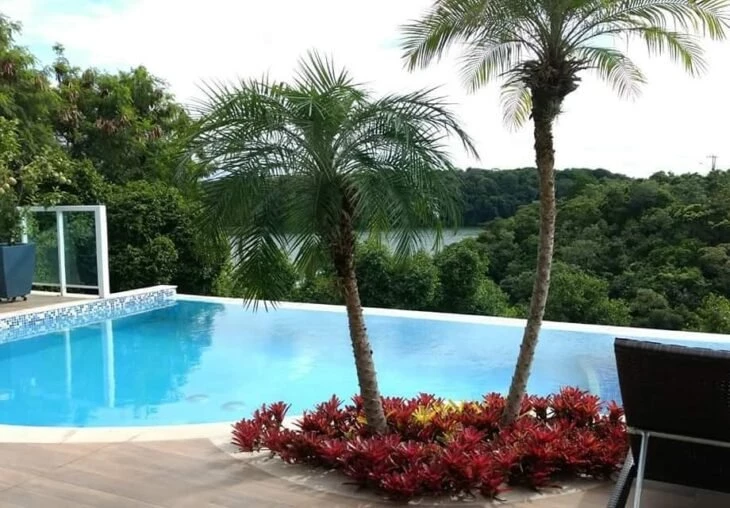
29. invest in bold compositions rich in color
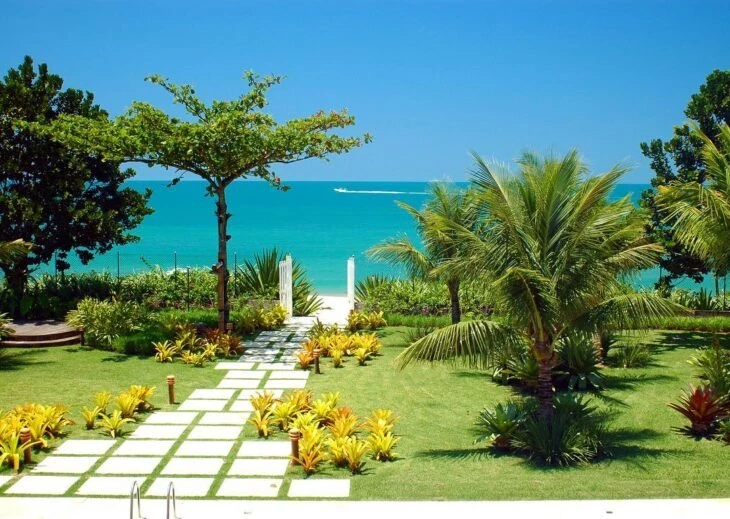
30. and create beautiful gardens with your bromeliads!
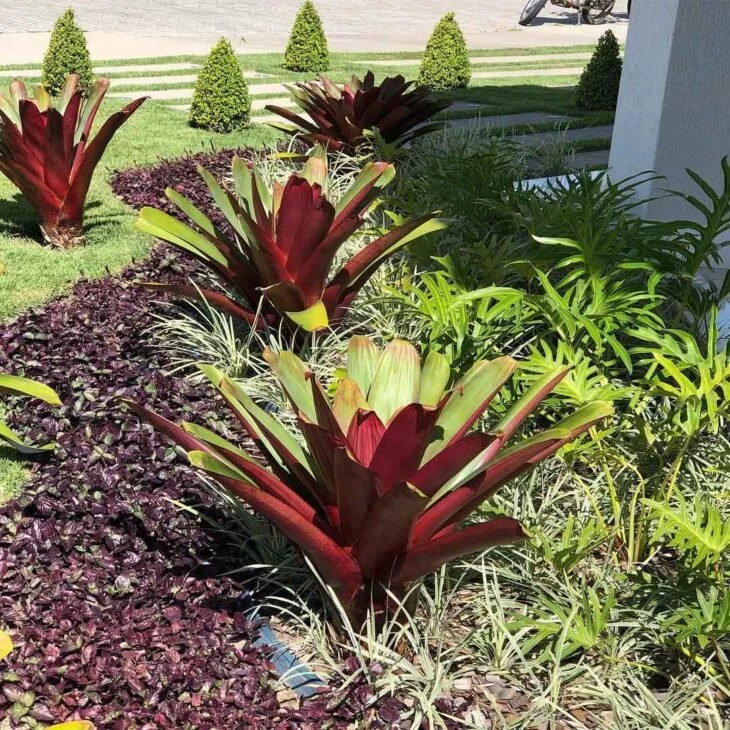
The most varied types of bromeliads adapt to various indoor and outdoor spaces and bring joy, color, and vivacity to the environment. Besides, their different species are wonders of nature and it is hard to resist so much beauty. Choose your favorite types, take advantage of the care tips, and guarantee a tropical look for any space. And if you love tropical species, take a lookalso how to grow the amazing Adam's rib foliage.


